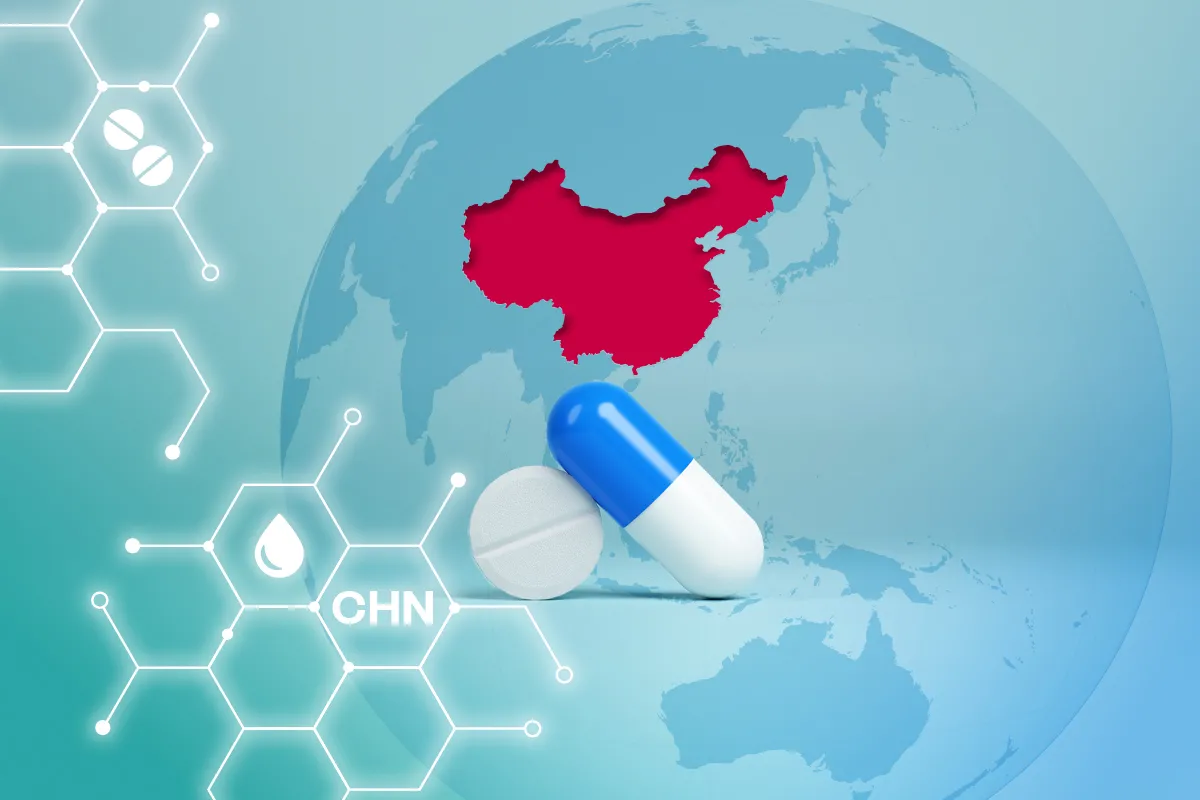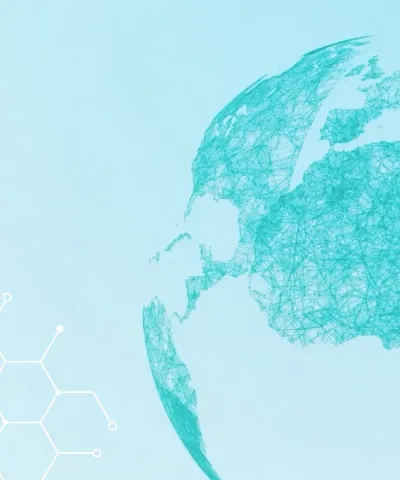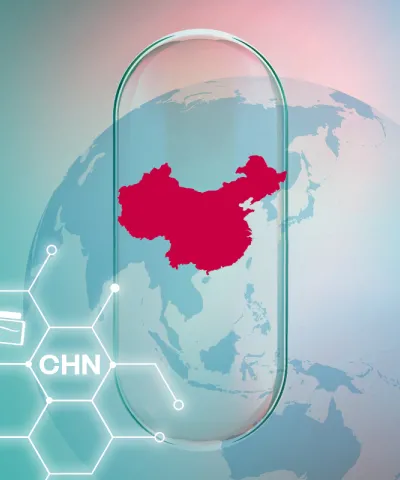China is increasingly contributing to biopharma innovations and driving transformative deals. Our experts share the latest trends and implications.
China has emerged as a pivotal hub for pharmaceutical R&D, drawing increasing interest from global pharma majors and investors alike. The share of Phase I-IV trials in China has steadily increased over the past decade, reaching 39 percent of the global total in 2023 (Exhibit 1). This trend reflects two critical factors:
- The rising importance of the Chinese market to multinational pharmaceutical companies, with China included in more multi-regional clinical trials for their pipeline assets.
- The growing innovativeness of Chinese research, with over one third of globally active clinical assets originally developed or co-developed by Chinese companies.
In fact, China-originated innovations have become a major source to replenish the pipelines of global companies. Dealforma reports that around a third of external molecules acquired by pharma majors come from China, and NextPharma estimates that the combined value of China's licensing-out deals has surged to around $46 billion in 2024, up from $38 billion in 2023 and $28 billion in 2022.
A closer look at the top 10 China out-licensing deals of 2024 reveals that many of the assets feature novel targets and mechanisms of action (MoA). The therapeutic area focus ranges from obesity and cardiovascular to immunology, liver diseases, and oncology, which was traditionally the sole area of focus.
Eight of the top 10 pharma deals in 2024 focused on early-stage assets, including preclinical or Phase I, suggesting buyer willingness to take on risk in exchange for potentially transformative innovations. Meanwhile, the three biggest deals stand out for their established MoA in therapeutic areas with strong commercial potential.
- Three GLP-1 assets (Hengrui-Kailera deal, $6 billion): In June 2024, China’s biopharma giant Hengrui licensed its GLP-1 portfolio to Kailera in a $6 billion deal. This portfolio includes three GLP-1 receptor agonists targeting the obesity markets, which have seen meteoric growth driven by drugs like Ozempic and Wegovy. The GLP-1 market alone was valued at $53 billion in 2024 and is expected to exceed $150 billion by 2030, reflecting its immense commercial potential.
- Multiple RNAi assets (Argo-Novartis deal, $4.2 billion): This is the first significant overseas out-licensing transaction in the RNAi field from a Chinese biotech company. Multiple RNAi assets developed with Argo's state-of-the-art RNAi platform are expected to further enhance both the Novartis global and China pipelines.
- Bispecific antibody (LaNova-Merck deal, $3.3 billion): The novel anti-PD-1/VEGF BsAb for advanced solid tumors has entered clinical stage following promising preclinical results showing strong tumor growth inhibition and a well-tolerated safety profile. With potential to be used in combination with a range of treatment modalities, LM-299 would help Merck build a diversified oncology portfolio spanning differentiated mechanisms and multiple modalities.
Jiangsu Hengrui’s 2024 GLP-1 deal is noteworthy, not just because of its $6 billion deal size, but also for its innovative NewCo deal structure. Under this construct, the assets were licensed to a newly incorporated Delaware company, co-owned by Hengrui and a consortium of investment firms. Hengrui would receive typical payouts, including upfront and milestone payments, while retaining a significant equity share of the NewCo. The structure helps to de-risk geopolitical uncertainties, combines near-term returns and future upsides, and affords NewCo the possibilities to pursue a wide range of strategic options including capital market listing, M&As, and licensing deals, as well as spin-offs as needed down the road. The model has since been closely followed and emulated in half a dozen deals so far, including two NewCos in early 2025 by Keymed and Harbour Biomed.
Exhibit 3: Top 10 out-licensing of asset deals by Chinese originators (ordered by deal size), 2024
Originator | Licensee | Deal size (billion USD) | Licensed drug | Clinical stage | Therapeutic area | Mechanism of action (MoA) |
| Hengrui | Kailera Therapeutics | 6.0 | HRS-7535, HRS-9531, and HRS-4729 | Phase 2 | Obesity | GLP-1 receptor agonist |
| Argo biopharma | Novartis | 4.2 | Multiple RNAi assets | Phase 1 | Cardiovascular | siRNA |
| LaNova | MSD | 3.3 | LM-299 | Phase 1 | Oncology | anti-PD-1 x anti-VEGF BsAb |
| CSPC | AstraZeneca | 2.0 | YS2302018 | Pre-clinical | Cardiovascular | Lowers Lp(a) |
| Hansoh | MSD | 2.0 | HS-10535 | Pre-clinical | Obesity | GLP-1 receptor agonist |
| ImmuneOnco | InstilBio | 2.0 | IMM2510, IMM27M | Phase 1 | Oncology | anti-PD-1 x anti-VEGF BsAb |
| Ribo | Boehringer Ingelheim | 2.0 | SR-111, SR-112 | Pre-clinical | Liver disease | undisclosed |
| FutureGen | AbbVie | 1.7 | FG-M701 | Phase 1 | Immunology | TL1A antibody |
| Ascentage Pharma Group International | Takeda Pharmaceutical Co Ltd | 1.3 | Olverembatinib | Phase 3 | Oncology | BCR-ABL1 TKI |
| MabCare Therapeutics | Day One Biopharmaceuticals Inc | 1.2 | MTX-13 | Pre-clinical | Oncology | PTK7-directed ADC |
ADC: Antibody-drug conjugate; BsAb: bispecific antibody; Lp(a): Lipoprotein (a); GLP-1: Glucagon-like peptide-1; PTK7: Protein tyrosine kinase 7; RNA: Ribonucleic acid; VEGF: Vascular endothelial growth factor; TKI: Tyrosine kinase inhibitors; TL1A: Tumor necrosis factor-like cytokine 1A
The pattern of deals in 2024 underscores a two-pronged investment strategy in the sector. On the one hand, there is increasing appetite to embrace early-stage assets, which accounted for the lion’s share of deal activities. On the other hand, the larger deals lean toward those with established MoA, reflecting the need to balance innovation with commercial predictability.
These cross-border partnerships create a strategic win-win: Western pharmaceutical giants gain access to innovative assets to replenish their thinning pipelines, while Chinese biotech companies—often constrained by limited commercial footprints in western markets—secure significant funding to further develop their pipelines and expand their capabilities.
Besides out-licensing deals, outright acquisitions have been on a steady rise, taking advantage of the relatively low valuation across the sector. Among the more sizable ones, Genmab acquired ProfundBio for a number of oncology assets as well as its ADC platform for $1.8 billion, and BioNTech made major headway with its recent acquisition of bispecific antibody specialist Biotheus at $950 million and established its footprints in China in one fell swoop.
Navigating cross-border deals requires a holistic understanding of not only the science and the underlying diseases, but more importantly the nuances across different markets. These differences span legal, regulatory, and approval processes as well as the clinical practices, competitive environment, and market access landscape. A strategic approach and proper due diligences are key to managing the complexities and unlocking the full potential of China innovations.
Thanks to contributions from Joki Wallace and Selene Peng!


